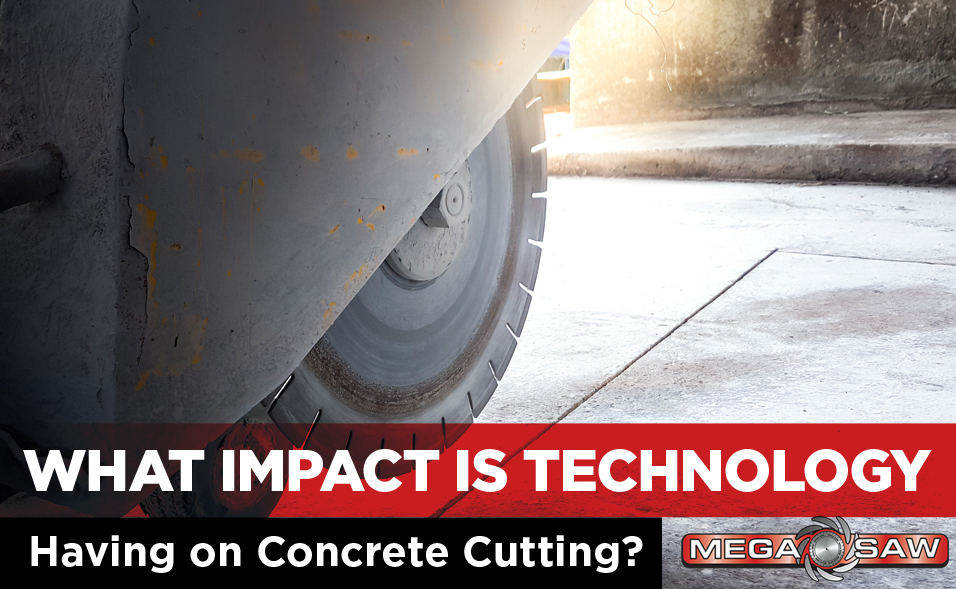Concrete sawing is generally seen as a manual task but like so many other jobs out there today there is a growing movement towards using technology to make life easier.
The earlier generations of electrical concrete saws and petrol saws were loud, noisy, and cumbersome.
It was difficult to make precise cuts, with these saws mostly being used for the most rough and ready jobs.
The Evolution of The Concrete Saw
Today, all that has changed. Modern saws have improved precision and are much easier to manipulate.
Many modern saws take a lot of the measurement burden away from the operator, which reduces the instances of human error.
In addition, they cut more quickly and offer a cleaner finish thanks to improvements in the quality and toughness of the blades.
Concrete saw blades can look rather primitive, but there has been a lot of work put into making the blades that we use today.
Blades and bits are usually made from a steel core or tube, with segments that are then welded to the core using high-precision laser welding.
The segments are made from very hard materials (usually diamond or cobalt).
Blades can be up to 84 inches across, and a high-quality blade can cost thousands of dollars, but it is worth the money.
What Makes a Good Blade?
A good blade will have very strong segments. The fewer segments that the blade has, the lower the friction and the faster the blade will cut.
Depending on the intended application, however, a low number of segments may not be desirable.
In some cases, the operator may prefer a blade that has more segments since this means that the blade will last longer before it needs to be replaced.
In addition to the number of segments on the blade, another thing which will need to be considered is the RPM.
Even at comparatively low RPMs, blades can still get very hot. For this reason, blades are water-cooled.
Existing water-cooled saws use up to 2,000 litres of water per hour to keep the blades cool.
Reducing this level of water waste is something that companies are investigating.
The type of concrete being cut is another consideration. The type of blade that you choose may be influenced by the type of concrete that you are working with.
The most common kinds of concrete are hard-rock and limestone.
Limestone concrete is quite easy to cut, being relatively soft and porous, while hard-rock concrete is tougher to work with.
Cutting in Difficult Environments
Working with a difficult type of concrete is just one challenge.
Another area where concrete saw manufacturers have been forced to innovate is that of limited access cutting.
There are many environments where it is difficult to cut because the environment is cramped.
This not only makes maneuverability difficult but also means that the excessive amounts of dust cause ventilation issues.
There are many techniques which can be used in those environments.
For example, wall sawing is something that is often used not just for concrete walls but also working with concrete floors as well.
Using ‘track sawing’ and powerful saws with diamond blades can offer precise cuts in environments where other saws may not be suitable.
Concrete cutting is a challenging task and it is important to choose the right tools for the job.
Safety gear is essential because of the high RPM of the tools, and the amount of dust that can be produced even when water is used to reduce friction and cool the blades.
The best contractors stay abreast of the latest technologies to ensure that they are using the safest and most efficient tools for the job.
If you are looking for a specialist concrete cutting company who uses only the best practices to get the job done right, then please call us at Megasaw on 1300 920 419 or contact us through our website www.megasaw.com.au/contact-us/

